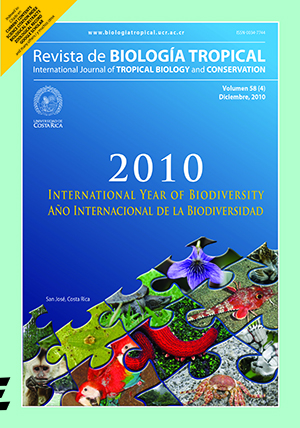Abstract
In the last three decades, rapid assessment surveys have become an important approach for measuring aquatic ecosystem biodiversity. These methods can be used to detect anthropogenic impacts and recognize local or global species extinctions. We present a floristic survey of the aquatic macrophytes along the Brazilian margin of the Itaipu Reservoir conducted in 2008 and compare this with a floristic survey conducted ten years earlier. We used ordination analysis to determine whether assemblage composition differed among reservoir arms. Macrophyte species were sampled in each of the 235 sampling stations using a boat, which was positioned inside three places of each macrophyte stand to record species and search for small plants. We also collected submerged plants using a rake with the boat moving at constant velocity for ten minutes. We assigned individual macrophyte species to life form and identified representative species for each life form. A total of 87 macrophyte taxa were identified. The emergent life forms contained the highest number of species, followed by rooted submerged life forms. The extensive survey of macrophytes undertaken in September 2008 recorded more species than a survey conducted between 1995 and 1998. This could be due to changes in water physico-chemistry, disturbances due to water drawdown and the long period between surveys, which may have allowed natural colonization by other species. Additionally, differences in the classification systems and taxonomic resolution used in the surveys may account for differences in the number of species recorded. Assemblage composition varied among the arms and was affected by underwater radiation (as measured using a Secchi disk) and fetch. Five non-native species were found. Two of these non-native species (Urochloa subquadripara and Hydrilla verticillata) are of special concern because they have a high frequency of occurrence and occupy large marginal areas of the reservoir. Future surveys should be conducted to determine the habitat most frequently colonized by these species. This would allow management strategies to be developed to protect native aquatic biota and prevent interference with the recreational and commercial uses of the Itaipu Reservoir.##plugins.facebook.comentarios##

This work is licensed under a Creative Commons Attribution 4.0 International License.
Copyright (c) 2010 Revista de Biología Tropical






